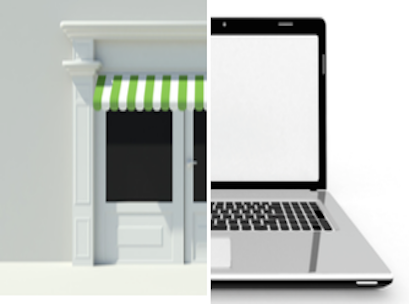 Online retailers of household and family products are the emerging sector leaders as Australians shift their shopping priorities, and the declining Australian dollar makes spending overseas less attractive.
Online retailers of household and family products are the emerging sector leaders as Australians shift their shopping priorities, and the declining Australian dollar makes spending overseas less attractive.
According to new research by tax and advisory firm BDO, local consumers are increasingly spending on items for their homes and children, but are becoming thriftier when it comes to entertainment purchases.
In Changing Tides: BDO Retail Market Update, the firm analysed the revenue growth of 85 Australian retail sub-sectors and identified the 20 highest, two low growth but stable and 10 poorest performing retail sub-sectors. It found that despite the rise of omni-channel retail, e-commerce revenue is still growing at higher rates than bricks and mortar.
According to BDO partner and retail specialist John Bresolin, online sales channels represented 19 of the top 20, with fast fashion the only bricks and mortar inclusion.
“Online household furniture emerged as the top sub-sector overall, with the highest levels of forecasted revenue growth in both FY15 (up 20.1 per cent) and FY16 (up 16.2 per cent),” Bresolin said.
“Looking forward, that sub-sector is set to be joined in the top six in FY15 by online baby products, online sporting apparel, online grocery, online books, and online kitchen and diningware, demonstrating both a growing propensity to spend on the family and home, and to buy products on the internet that were traditionally bought instore.
“Meanwhile, bricks and mortar toy retailers seem to be getting back on track, going from negative decline in previous years to modest yet steady positive growth in FY15 and onwards.
“Conversely, Australians are consuming less paid entertainment, with online CD and DVD revenue set to drop the furthest in FY15 (down 7.2 per cent), along with bricks and mortar newspaper and book sales as well as movie rentals.
“Even the video game and recorded music sub-sector, which saw signs of improvement between FY13 to FY14, is forecasted to see significant sales deterioration in FY15 and 16 (- 1.9 per cent and -2.3 per cent respectively), demonstrating the way in which consumers access media and entertainment has well and truly changed.”
Online growth drops off
Overall, online sales growth is expected to curb significantly over the next fiscal year, with five of the top 10 FY15 forecast to experience substantial drops in growth in FY16.
“This does not mean the bubble will burst, but the sector growth figures of 20 to 30 per cent experienced over the last few years are predicted to decrease to a more conservative and perhaps sustainable rate from FY15 and FY16 onwards,” Bresolin said.
“Online computer and tablet sales are expected to see the steepest drop in growth in FY15 to 13.5 per cent down from 27.2 per cent in FY14, as this product market faces increasing competition from smartphones as consumers shift preference to mobile devices.
“All online fashion sub-sectors are expected to experience slower rates of growth in the future, with the exception of online men’s clothing and online sporting apparel, which are expected to post revenue growth of 13.4 per cent and 15 per cent respectively in FY16. Bricks and mortar department stores on the other hand are forecasted to slip into the bottom five in FY16 with -2.7 per cent revenue growth.
“This could be due to a combination of consumer confidence influences, from policy uncertainty surrounding university fees and GP co-payments, to budget announcements and the decreasing Australian dollar, meaning people may be holding onto their money a bit tighter than previous years.
“The lower dollar, for example, might deliver to Australian retailers a short term sales spike as overseas purchases become less attractive to consumers, however if local retailers pass on the higher costs of purchasing foreign made stock to customers, they may see sales weaken again in the future.”
Bricks and mortar adapts and stabilises
While fewer retail sub-sectors are expected to have breakout years in the online space, Bresolin suggested there were some green shoots from the bricks and mortar space as retailers showed they had adapted to the changed trading conditions of recent years.
“Bricks and mortar operators that have previously struggled are starting to successfully reduce, and in some cases reverse, sales decline,” Bresolin said.
Fast fashion is set to hold particularly strong with revenue growth of 10.1 per cent in FY16, while toys is also expected to see solid positive revenue growth (2.3 per cent), an example perhaps of how retailers are ramping up efforts to improve their instore offering to compete with online.
“Convenience stores are forecasted to move from negative revenue growth in recent years to relatively solid positive growth in FY16, a sign that their ‘convenience’ differentiation from the supermarket giants appears to be yielding results.
“The data tells us we can expect competition to intensify as retailers continue evolving their offering to changing consumer demands and it is increasingly pivotal for retailers to maintain a competitive online presence. Traditional bricks and mortar retailers may need to focus less on the online/offline split and instead explore the integration of these channels.”





